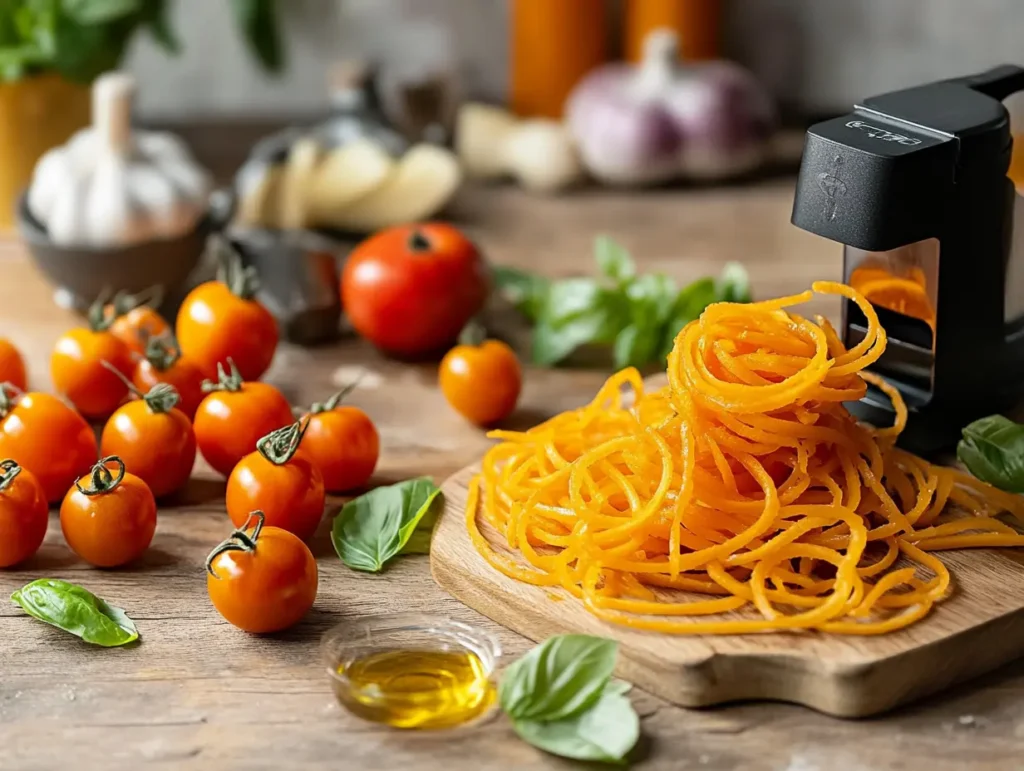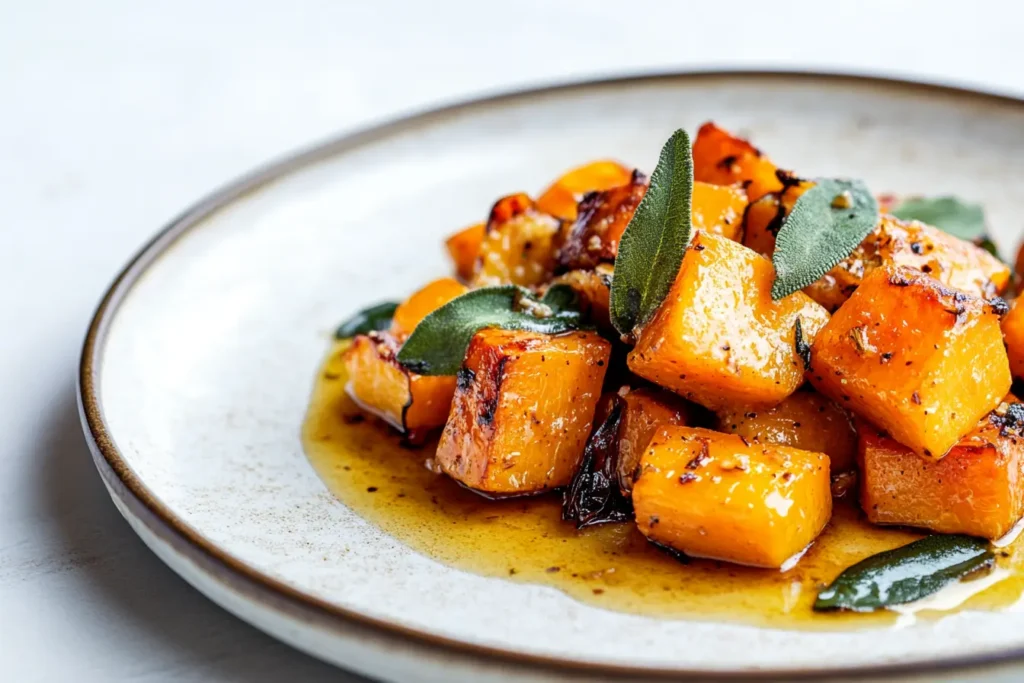Is butternut squash good substitute for pasta? This article explores how butternut squash can be a great, healthy alternative to traditional pasta dishes. Learn about its benefits and discover tasty ways to use it.
Table of contents
Is Butternut Squash Good Substitute for Pasta?
Many people seek healthier options to pasta. Butternut squash presents a fantastic solution. Butternut squash, with its mild, sweet taste, can wonderfully replace pasta. Therefore, it’s a good swap for many recipes. It offers a different flavor but a similar satisfying texture. This swap can reduce carbs and boost nutrients.
Health Benefits of Butternut Squash
- Rich in Vitamins: Especially Vitamin A and Vitamin C
- Good Source of Minerals: Including potassium
- High in Fiber: Aids digestion
- Lower in Calories: Helps with weight management
Butternut Squash vs. Traditional Pasta: A Comparison
- Pasta:
- High in carbohydrates
- Lower in fiber
- Provides quick energy
- Butternut Squash:
- Lower in carbohydrates
- Higher in fiber
- Provides steady energy
- Rich in vitamins and minerals
- Naturally gluten-free
How to Prepare Butternut Squash as Pasta
Preparing butternut squash as pasta is simple, with various methods impacting texture and flavor. The goal is to create a pasta-like experience while retaining the squash’s nutritional value. Here’s a breakdown of three popular approaches:
Spiralizing Butternut Squash

- Method: Use a spiralizer to create noodles (“squashghetti”).
- Spiralizer: Choose handheld, countertop, or electric based on needs.
- Prep: Peel, remove ends and seeds before spiralizing for uniform noodles.
- Thickness: Adjust settings for desired noodle thickness.
- Cooking: Sauté, roast, or steam until tender-crisp.
- Sauté: Medium-high heat with oil, add flavors; firmer texture.
- Roast: Toss with oil/spices, bake at 400°F (200°C); caramelized finish.
- Steam: Gentle cooking, preserves sweetness; softer texture.
- Result:Pasta-like strands, quick to cook.
- Texture: Tender, al dente, avoid overcooking.
- Serving: Use immediately for best results.
Roasting Butternut Squash and Scooping the Flesh
- Method: Roast squash halves, then scoop out the flesh.
- Cutting: Halve squash carefully; microwave briefly to soften if needed.
- Seeds: Remove seeds/fibers for smoother texture.
- Roasting: Cut-side up, brush with oil/spices, 40-60 min at 400°F (200°C).
- Preparation: Scoop out, then mash or create strands.
- Scooping: Remove soft flesh from skin.
- Mashing: Mash for creamy texture; ideal for sauces.
- Strands: Gently pull apart for thicker, pasta-like pieces.
- Result: Soft, creamy texture.
- Flavor: Roasting enhances natural sweetness, caramelized flavor.
- Versatility: Use as a base for sauces, soups, or sides.
Baking Whole Butternut Squash
- Method: Bake entire squash until soft.
- Prep: Wash, prick with fork.
- Baking: 60-90 min at 375°F (190°C) until tender.
- Cooling: Let cool before handling.
- Preparation: Cool, cut open, then scrape the flesh.
- Cutting: Halve after cooling.
- Scraping: Scoop out soft flesh from skin.
- Result: Easy, minimal prep, versatile flesh.
- Ease: Minimal steps, good for quick meals.
- Applications: Mash, blend, use as a base for various dishes.
Is Butternut Squash Good Substitute for Pasta? Delicious Recipe Ideas to Try
The versatility of butternut squash makes it easy to adapt. It works well with many flavors. Here are a few ideas.
Butternut Squash “Pasta” with Creamy Tomato Sauce
Is butternut squash good substitute for pasta? This recipe is a simple but tasty option to find out. Firstly, prepare your butternut squash by slicing it into pasta-like strands or cubes. Then, make a basic tomato sauce using onions, garlic, and tomatoes. Season it with herbs and spices for extra flavor. Finally, combine the cooked butternut squash with the sauce. A little parmesan cheese on top adds a touch of elegance, making this dish a delicious and healthy alternative to traditional pasta.
Ingredients:
- 1 medium butternut squash
- 1 tbsp olive oil
- 1 onion, chopped
- 2 cloves garlic, minced
- 1 can (14 oz) crushed tomatoes
- 1 tsp dried oregano
- ½ tsp dried basil
- Salt and pepper to taste
- Parmesan cheese, for serving
Instructions:
- Firstly, prepare the butternut squash. Use a spiralizer or roast it until soft.
- Next, heat olive oil in a pan. Add the onion and cook until it is soft.
- Then, add the minced garlic and cook for another minute.
- Next, add the crushed tomatoes, oregano, and basil. Season it with salt and pepper.
- Finally, simmer for 15 minutes.
- Toss the sauce with the prepared butternut squash and serve with parmesan cheese.
Butternut Squash “Pasta” with Pesto
This option is full of fresh flavors. Prepare the butternut squash. Next, make a fresh pesto. You can make the pesto with basil, pine nuts, garlic, parmesan cheese, and olive oil. If you don’t have time, a store-bought pesto also works well. Then, combine the cooked butternut squash with the pesto. Toss it to coat evenly. Add some cherry tomatoes for extra flavor. Sprinkling some toasted pine nuts or parmesan cheese adds depth.
Ingredients:
- 1 medium butternut squash
- 2 cups fresh basil leaves
- ½ cup pine nuts
- 2 cloves garlic
- ½ cup Parmesan cheese, grated
- ½ cup olive oil
- Salt and pepper to taste
- Cherry tomatoes, halved
Instructions:
- Prepare the butternut squash.
- Combine basil, pine nuts, garlic, and Parmesan cheese in a food processor. Pulse until finely chopped.
- With the food processor running, slowly drizzle in olive oil until the pesto is smooth. Season with salt and pepper.
- Toss the cooked butternut squash with the pesto. Add halved cherry tomatoes.
- Serve immediately.
Butternut Squash “Pasta” with Brown Butter and Sage

This dish is elegant yet simple. Start with your butternut squash. Melt butter in a pan until it browns. This process will give it a rich, nutty aroma. Add some fresh sage leaves to the butter. This will enhance the flavor. Next, toss the cooked butternut squash with the brown butter and sage. A touch of lemon juice brightens the dish. It can be a wonderful side or main course.
Ingredients:
- 1 medium butternut squash
- 4 tbsp unsalted butter
- 4 fresh sage leaves
- Juice of ½ lemon
- Salt and pepper to taste
Instructions:
- Prepare butternut squash.
- Melt butter in a pan over medium heat. Cook until it starts to brown.
- Add sage leaves. Cook for 1 minute.
- Remove the pan from heat and add lemon juice.
- Season the sauce with salt and pepper.
- Toss the cooked butternut squash with the brown butter and sage.
- Serve hot.
Tips for Making the Best Butternut Squash “Pasta”
For best results, consider these tips:
Choosing the Right Butternut Squash
- Firmness: Select a firm squash.
- Weight: It should feel heavy for its size.
- Avoid: Squash with soft spots or bruises.
Cooking it Properly
- Don’t Overcook: Avoid a mushy texture.
- Tender-Crisp: Cook until tender with a slight bite.
Seasoning it Well
- Salt: Enhances sweetness.
- Pepper: Adds depth.
- Herbs: Fresh herbs elevate the flavor.
- Other Spices: Consider adding garlic powder, onion powder, paprika, or a pinch of red pepper flakes for more complex flavors.
- Lemon or Lime: A squeeze of fresh lemon or lime juice can brighten the flavors and add a touch of acidity.
- Cheese: Parmesan, Pecorino Romano, or even a sprinkle of goat cheese can add a savory, salty dimension.
Enhancing the Texture
- Roasting: Roasting the butternut squash before spiralizing or scooping can enhance its natural sweetness and give it a slightly caramelized flavor, improving the texture.
- Blotting: After spiralizing, gently blot the noodles with a clean towel to remove excess moisture, preventing them from becoming too soggy when cooked.
- Sautéing: If sautéing, use high heat and a minimal amount of oil to prevent the noodles from becoming mushy.
- Baking: If using roasted strands, toss them lightly with olive oil before baking. This helps in further caramelizing the strands and adds an extra layer of flavor to the recipe.
- Combining with Other Ingredients: Combine butternut squash with other vegetables, such as zucchini or carrots. This will add more texture and flavor to the dish.
- Nuts and Seeds: Consider adding nuts such as toasted pine nuts, walnuts, or almonds, or seeds such as pumpkin seeds or sunflower seeds to add a bit of crunch.
- Protein Options: Consider adding some grilled chicken, shrimp, or prosciutto for a protein-rich dish.
Sauce Pairings
- Light Sauces: Butternut squash pairs exceptionally well with light, flavorful sauces like pesto, lemon butter, or a simple tomato sauce. Avoid heavy cream-based sauces, which can overpower the delicate flavor of the squash.
- Herbs: Fresh herbs such as sage, thyme, basil, and oregano compliment the flavor of butternut squash.
- Spices: Warm spices such as nutmeg, cinnamon, or ginger can create a cozy, autumnal dish.
- Balsamic: A balsamic glaze adds a sweet and tangy touch to the dish. Drizzling a little balsamic reduction over the cooked squash will elevate the flavor profile significantly.
- Acidic Elements: Adding a squeeze of fresh lemon juice or a splash of white wine vinegar can balance the sweetness of the butternut squash.
- Mushroom Sauces: Sautéed mushrooms with garlic and herbs create a wonderful, earthy sauce.
Serving Suggestions
- Warm Plates: Serve the butternut squash “pasta” on warm plates to maintain the temperature.
- Garnish: Garnish with fresh herbs, cheese, toasted nuts or seeds, or a drizzle of good-quality olive oil just before serving to elevate the presentation and flavor.
- Additional Enhancements: Serve alongside a simple salad to add a fresh, refreshing element to the meal, for example, a cucumber and tomato salad.
Is Butternut Squash Good Substitute for Pasta? Benefits of Choosing This Healthy Alternative
Choosing butternut squash offers many advantages.
Lower in Carbohydrates
- Advantage: Suitable for low-carb diets.
- Impact: Helps manage blood sugar levels.
Higher in Fiber
- Function: Promotes good digestion.
- Benefit: Helps you feel full for longer.
- Outcome: Aids in weight control.
Rich in Vitamins and Minerals
- Effect: Boosts your nutrient intake.
- Value: Easy way to add goodness to meals.
Gluten-Free
- Benefit: Suitable for people with gluten sensitivity.
- Use: Safe and tasty alternative.
Versatile and Flexible
- Prep: Prepared in many ways.
- Adaptability: Works with various sauces and seasonings.
- Advantage: Great choice for home cooking.
Potential Downsides of Using Butternut Squash as Pasta
While mostly beneficial, some aspects should be considered.
Different Texture
- Issue: Softer than typical pasta.
- Adjustment: May take time to get used to.
Preparation Time
- Consideration: Takes longer than cooking pasta.
- Mitigation: Practice speeds it up.
Not Suitable for all Dishes
- Limitation: May not suit all pasta dishes.
- Choice: Consider the dish type.
Is Butternut Squash Good Substitute for Pasta?: Conclusion
In conclusion, butternut squash is a very good alternative to pasta. It has numerous health benefits and versatility. It’s low in carbohydrates, rich in fiber, and packed with vitamins and minerals. Butternut squash is also gluten-free. Therefore, it’s suitable for various dietary preferences. While it has a different texture, many people find it enjoyable. The recipes mentioned make it a tasty and nutritious option. So, if you want a healthy pasta alternative, try butternut squash.
FAQs about Is butternut squash good substitute for pasta?
Which is healthier, spaghetti or butternut squash?
- Butternut Squash: Lower in carbohydrates, higher in fiber, vitamins, and minerals.
- Spaghetti: Provides energy, but less nutritional value.
How to cut butternut squash for spaghetti?
- Spiralizing: Use a spiralizer for noodles.
- Roasting: Roast halves; fork out strands after cooking.
Why is my spaghetti squash mushy?
- Overcooking: Cook until tender with a slight bite.
- Moisture: Ensure proper draining and handling.
Does squash help burn belly fat?
- Not Directly: Squash doesn’t target belly fat directly.
- Weight Loss: Aids weight loss when eaten as part of a healthy diet.
- Fiber: Promotes satiety and reduces overeating.
